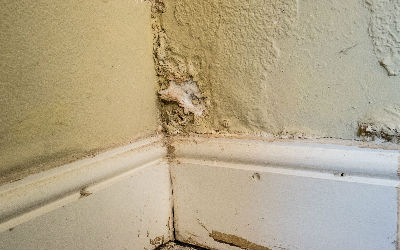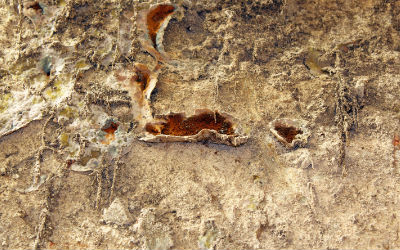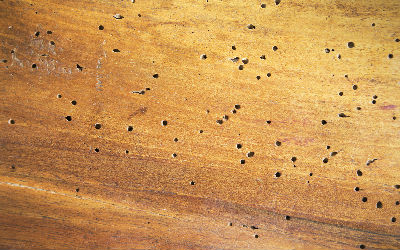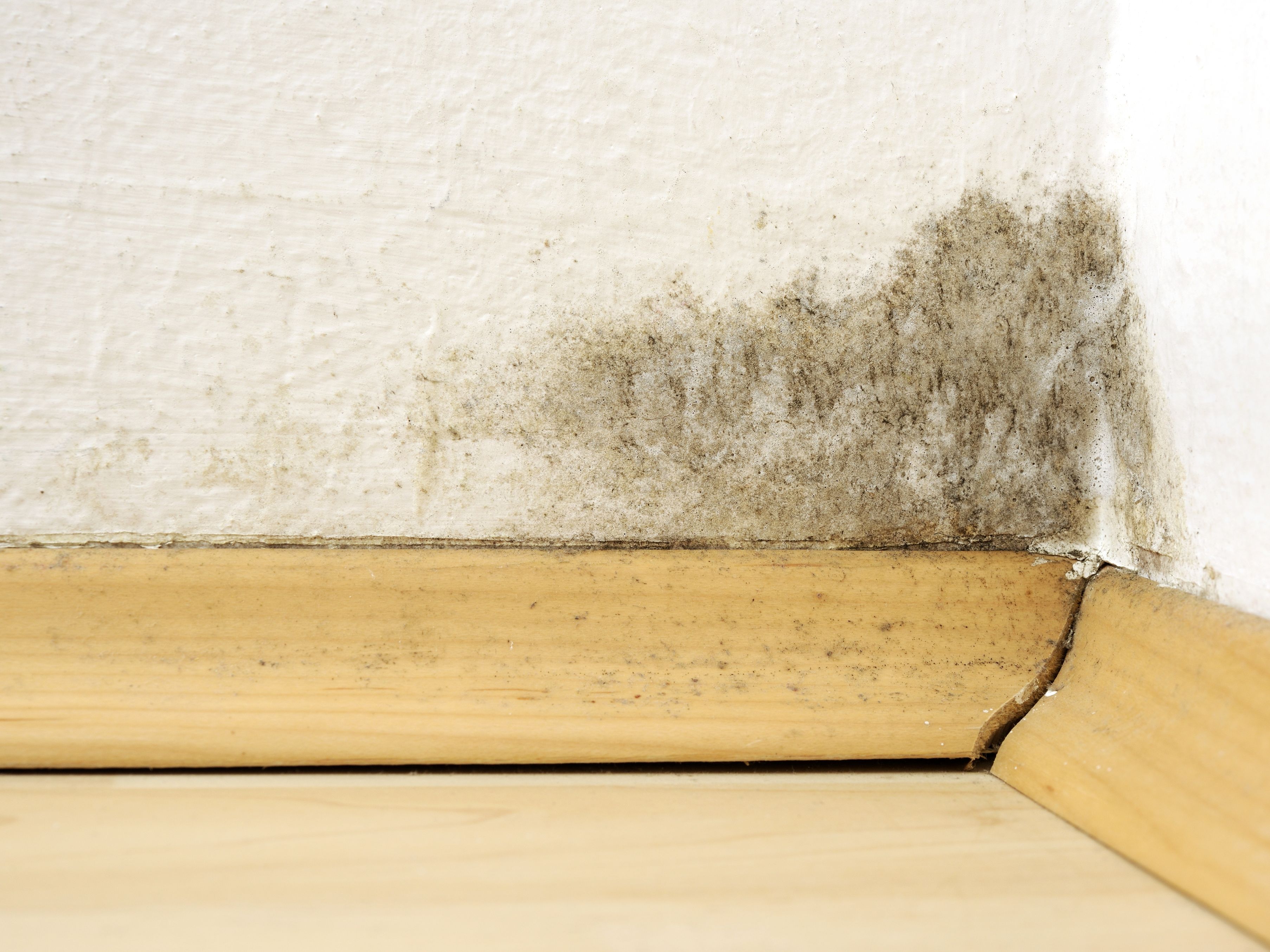Rising Damp
Can be described as dampness resulting from water in the ground, rising up through masonry by capillary flow. Effects of rising damp are damp patches or tide marks ruining interior decorations and unhealthy living conditions, increased heat losses and hygroscopic salts causing staining and retaining moisture in the walls. Weakening of the fabric or structure of the building and also providing conditions suitable for fungal growths, causing degeneration of timber. Read more click here.
Condensation
The most common cause of dampness in buildings is condensation. This is caused by atmospheric moisture which is deposited on cooler surfaces. This is a particular problem during winter, and only becomes apparent when mould appears in the damp areas. Condensation is pure water, and since it is salt free can help support black spot mould growth. In extreme cases dampness may occur as pooled water, rot wood and saturate clothing and foodstuffs etc. Condensation occurs in cooler areas of buildings, usually at lower levels and in corners. Read more click here.
Dry Rot
In the UK the term ‘dry rot‘ refers to outbreaks of wood decay, by the fungus (Serpula Lacrymans) Unlike wet rot for which relatively simple procedures are adequate for control. The successful remedial treatment of dry rot, may require elaborate and sometimes very expensive control measures. It is important therefore in the first instance, that the outbreak is identified correctly. Read more click here
Wet Rot
There are many fungal species causing wet rot, the same remedial measures are required for all of them. They cause a darkening of the timber (brown rot) or a bleaching (white rot) some types are only rarely seen in buildings. Read more click here
Wood Boring Insects
A number of insects, mainly beetles are able to use wood as a food source, and some of them can cause serious damage to building timbers. These insects all have fairly similar life cycles, although there are variations in the length of each stage in the life cycle, the type of wood attacked and the extent and type of damage caused. Read more click here
Penetrating Damp
Basically this will enable direct rain penetration, faulty rainwater goods, faulty plumbing and lateral penetration below dpc to be considered penetrating damp. Read more click here
Salts
Efflorescent salts and appear as a crystalline growth on the surface of a wall, where they are seen during the drying out of new construction or on renewed Plaster or as a result of evaporation of the moisture of penetrating damp.
Hygroscopic salts have the ability to absorb atmospheric water vapour. Consequently depending on the relative humidity conditions prevailing. The structures which contain such salts may be intermittently ‘damp’ even though no external source of liquid moisture is present. Read more click here
Mould
Mould growth will appear on any damp surface such as plaster, wallpaper and timber, and is associated with condensation problems in many buildings. It is unacceptable because of its appearance (unsightly growths of various colours green, pink yellow, black etc) odour (musty and damp) and fears of health and hygiene considerations. Read more click here








